EXPERIENCE ENCANVAS IN 60-MINUTES!
We're always happy to walk you through Encanvas no matter where you are in the world.

Discover Why aPaaS Technology Has Become The Secret Sauce of Cloud Computing
Written by Ian C. Tomlin | 12th January 2024
Read this article to get up-to-speed on applications Platform as a Service technology.
A Platform as a Service (PaaS) or application Platform as a Service (aPaaS) is the component of cloud computing services that facilitates the design, deployment and operation of potentially infinite numbers of apps, bots, digital documents and portals using no-code or low-code development methods. This reduces the complexity of building and maintaining a digital infrastructure whilst accelerating applications developments and improving business agility.
What was missing was the cloud tooling to enable Software-as-a-Service vendors (and enterprises themselves) to design, deploy and run applications. This is where enterprise aPaaS solutions come in.
Your aPaaS should support the full “Software Lifecycle” which allows cloud consumers to develop cloud services and applications (e.g. SaaS) directly on the PaaS cloud. Hence the difference between SaaS and PaaS is that SaaS only hosts completed cloud applications whereas PaaS offers a development platform that hosts both completed and in-progress cloud applications. This requires PaaS, in addition to supporting application hosting environment, to possess development infrastructure including programming environment, tools, configuration management, and so forth.
One of the challenges of porting applications to the cloud has been the risk of data loss. Data security has become an increasing concern to organizations because of their greater reliance on data to continue business operations. aPaaS platforms have to simplify how data is uploaded to the cloud, how it is cleansed, aggregated, and formed into new apps.
Additionally, the increased compliance risks of processing personally identifiable information (PII) have made organizations more concerned about the security risks of cloud-deployed applications. For this reason, being able to track what data is uploaded, who does it, where it goes to, etc. is essential for any aPaaS to be considered ‘enterprise grade.’

aPaaS platforms fulfil the business need to create custom apps. In a digital age, these need to be delivered fast, at low cost, and very low risk. aPaaS platforms began as low-code, then no-code and are now moving to a completely codeless format. Equipping organizations to design, deploy and run as many apps as they need, an aPaaS removes the barrier between IT and ‘the business.’
Coding and scripting is the biggest reason why software development has been traditionally unpredictable, costly and unable to produce best-fit software results. Encanvas uniquely automates coding and scripting. Our live wireframing approach means that business analysts can create the apps you need in workshops, working across the desk with users and stakeholders.
With a general recognition that business success is increasingly derived from the ability of an enterprise to master and leverage its data value, senior management teams are increasingly exploring ways to make sense of their operational performance through data. The ability to do away with data spaghetti; to re-use data – to harvest, cleanse, rationalize, and analyze it – has become a mission-critical need. A recent innovation that has added further data handling dexterity to Encanvas is HyperDrive. Launched in 2021, HyperDrive is an agnostic data plug-in enabler that turns any data type, DLL or plug-in into an integrated component of the Encanvas codeless design architecture.
With businesses using technology ever more to generate a competitive advantage in their market, it’s almost impossible to imagine a business model that doesn’t benefit from a great web app, or customer portal. This is causing organizations to become app factories, churning out custom apps as quickly as they can come up with ideas on how to improve customer experience, service new product lines, and cut back-office operating costs.
To orchestrate business processes, organizations are adopting aPaaS platforms to interface between:
1. Workers and computer systems (human-to-machine-interfacing-applications) and;
2. Computers (machine-to-machine-interfacing-applications).
Perhaps unsurprisingly, some processes require both human and machine interfaces. Additionally, Robotic Process Automation – the use of software robots to manage data flows and automate tedious tasks – has become a common characteristic of aPaaS platforms.
With a general recognition that business success is increasingly derived from the ability of an enterprise to master and leverage its data value, senior management teams are increasingly exploring ways to make sense of their operational performance through data. The ability to re-use data – to harvest, cleanse, rationalize, and analyze it – has become a mission-critical need.
An application Platform as a Service is the ecosystem used to orchestrate the end-to-end software development lifecycle (SDLC) for enterprise apps. While the focus of aPaaS is often towards speed of development, etc. arguably the most important selection factors come down to the hygiene issues of data integration, data security, deployability, scalability, data governance, and resilience.
The need for greater agility in IT systems, together with the rising influence of operational departments on enterprise software buying decisions, has led to the rise in application platforms that allow non-programmers to author applications. aPaaS platforms will generally adopt Low-Code, No-Code or sometimes even Codeless approaches to developing applications. In doing so, they reduce or remove the need to see or use programming code or script in the design, deployment and operational phases of the Software Development Cycle.
Encanvas is an enterprise software company that specializes in application Platform-as-a-Service (aPaaS) solutions and helping businesses to create above and beyond customer experiences. The platform removes the barrier between IT and the business. Coding and scripting is the biggest reason why software development has been traditionally unpredictable, costly and unable to produce best-fit software results. Encanvas uniquely automates coding and scripting. The software’s live wireframing approach means that business analysts can create the apps you need in workshops, working across the desk with users and stakeholders.
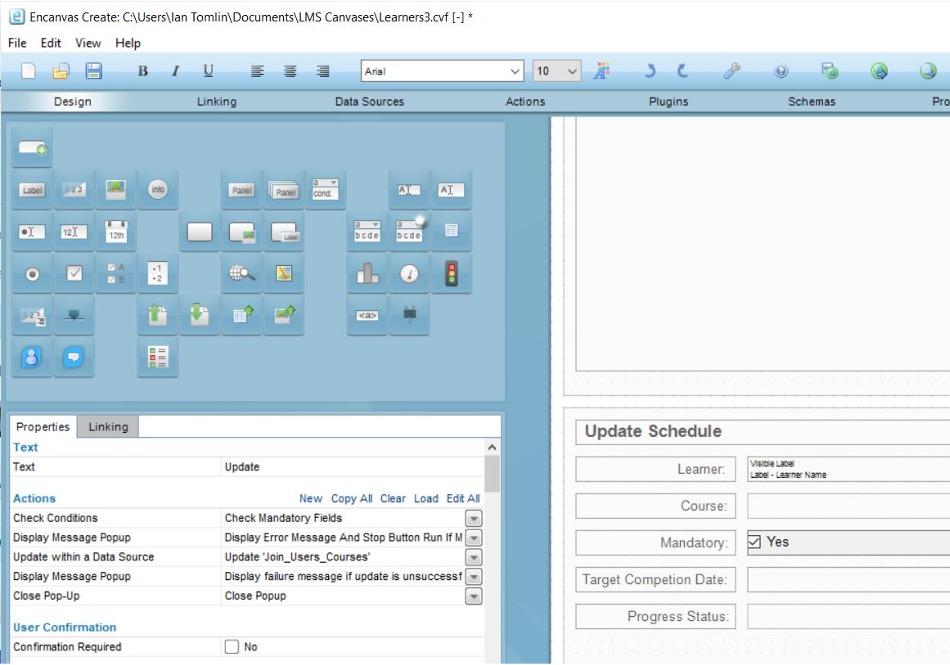
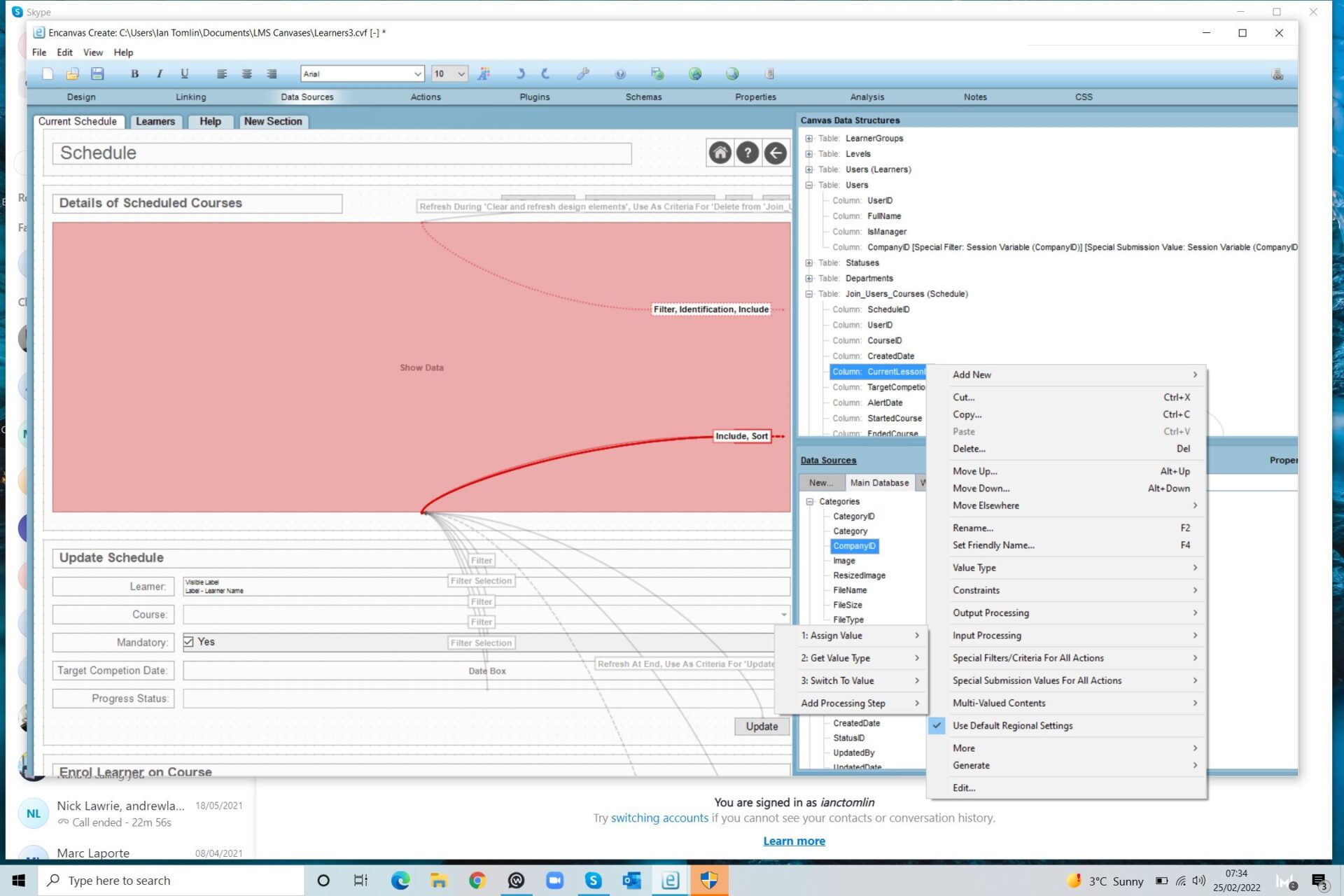
In most organizations a gap exists between inflexible Systems of Record – used to enforce good practice in common core back-office processes such as financial management, human resources, and customer relationship management – and demand for applications from departments, users, teams, customers, suppliers, and other stakeholders to support the fulfilment of a business model orchestration. A cloud aPaaS creates an umbrella across existing systems and fills the void in useful apps that workers, customers, suppliers, and other stakeholders want to use.
Now read:

Most enterprises today operate more than 80 SaaS apps, the consequence being ‘data sense’ is harder. The good news is that you can use a no-code aPaaS platform to bridge across enterprise silos to tame data spaghetti and create a single version of the truth

When the possibility of Software-as-a-Service (SaaS) solutions arrived into the market in the early 2000s — heralded in by the evolution of web platforms and cloud computing — they were game-changing for innovators in the tech industry.
Through cloud SaaS innovations, developers could bring their products to market faster (and eat much lower costs), focus on very tight niche solutions, offer products on a subscription, and give customers the opportunity to try them out immediately. Furthermore, technical support and endorsements could be supplied through the same online site that sold the products.
For buyers, SaaS was equally advantageous. No longer did they need to commit to a purchase before experiencing a product to see if it delivered value. The quality of products leaped up the scale, as providers HAD to deliver excellent quality, intuitive, and responsive applications.
The downside of SaaS is that it spreads your data across a wide number of data silos.
Enterprise computing practitioners were somewhat less thrilled by SaaS. Before its arrival, the role of the Enterprise CTO was unquestioned. They were the gods of technology, and nobody could get anything done in IT without their blessing.
The idea that departmental managers could arrive at the IT desk and start demanding software products they hadn’t even seen before, and show them immediate advantages was hard to counter, and left many IT heads on the back foot, trying to defend the common sense of requiring testing, integration and further validation before any recommendation was adopted.

The rise of SaaS adoption levels in the enterprise has soared over two decades, as department heads have got ever more involved in selection decisions on the tools they, and their teams, want to use. The power to make decisions drifted from the center of the enterprise to the margins.
Few could argue that the quality of applications used in business has benefited from SaaS. But at what cost?
Step into any large enterprise and you’ll encounter find the common problem of data held in various SaaS platforms with departmental managers pulling their hair out trying to gather it up to drive decisioning.
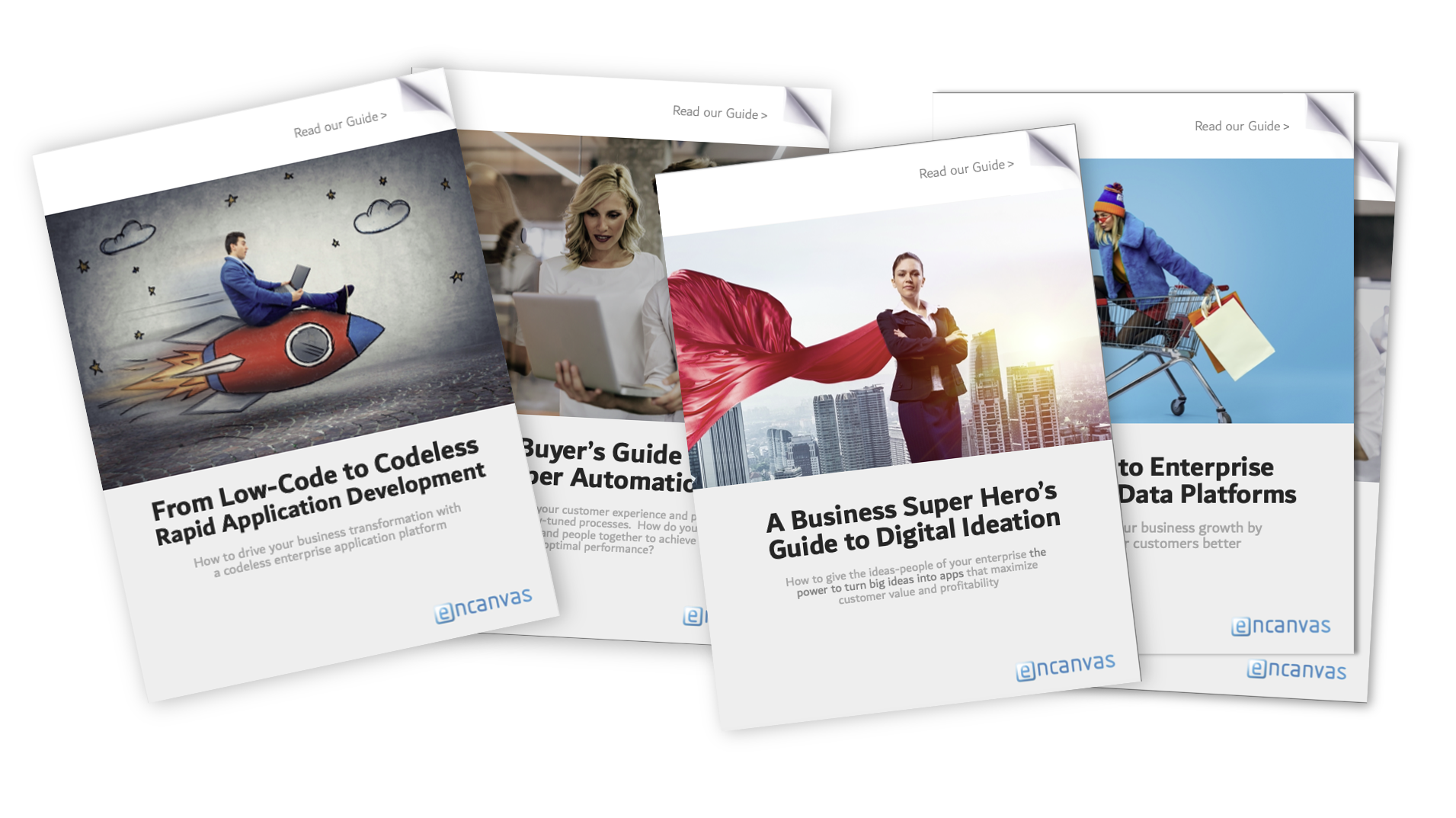
Guide to Digital Transformation
Guide to Hyper Automation
Guide to Digital Ideation
Guide to Customer Data Platforms
Guide to No-Code Platforms
Software-as-a-Service technology has played its part in making it close to impossible for real-time business decisioning to happen across the enterprise without an additional layer of ‘business intelligence and analytics’ technology being superimposed.
Even with the best data visualization and analytical tools, the problem of fragmented data silos pervades.
It’s not simply the case that SaaS tools separate usage activity into different places across the enterprise computing biosphere, using a myriad of separately authored apps results in every app using its own core data tables for common things that every organization needs to know about — such as people, departments, organizational hierarchies, policies, processes, suppliers and user groups. While some of these building blocks can be inherited from common directories, most are simply individually reproduced time and again by vendors.
Growing demand from department leaders and executives for new apps and real-time data analytics has created a demand for data reuse. And it’s when these requests emerge that the problems of data integrity and quality emerge.
Install any new digital innovation into an enterprise, and it’s almost inevitable that existing data will want to be harnessed.
When this happens, time and again, one finds that the original data tables operating within SaaS applications are incomplete, unused, or irrelevant. Business Analysts find themselves scratching their heads trying to work out which bits of data to string together to build a reliable picture of the operating reality.
Businesses want to be ‘digital’ but lack the quality and integrity of data to innovate.
It begs the question: Is there a better way? The answer is yes — and it’s been around for a while.
Secure&Live – A feature rich and data secure digital transformation platform. Secure and Live is a codeless Enterprise applications Platform-as-a-Service (aPaaS), built to turn business models and strategies into apps.
GlueWare – Enterprise iPaaS for bringing your data together, mashing it up, and bridging between your eCommerce store and back-office, streamlining processes for maximum results.
AppFabric – Build as many apps as you need using an agile codeless SDLC approach and change them as often as you like.
Live Wireframe – Design and publish ebooks, courseware and apps, then go live in two clicks!
CDP – Codeless Customer Data Platform to create a single view of your customer data. Use our data integration tools to harvest insights from across your enterprise and beyond.

Learn about the data safeguarding, features and modules of Encanvas that make it a leader in codeless enterprise aPaaS
The concept of cloud Platform-as-a-Service solutions has been buzzing around for over a decade since the arrival of cloud computing. PaaS describes the layer of technology that sits between Software-as-a-Service and the mechanical end of cloud–hardware infrastructure, memory disks and the like.
A no-code application PaaS is an environment for designing, deploying and operating tens — if not hundreds — of apps and software robots without needing to use code to design, deploy, and run them.
Using no-code-aPaaS means that Business Analysts found within IT or Digital teams (not coders) author applications. They do so working in consort with business stakeholders in what Gartner fashionably calls ‘fusion teams.’
Applications requirements go straight from the workshop whiteboard into a live wireframe that swiftly becomes a new application.
Examples of mobile and web desktop applications designed and deployed on no-code aPaaS
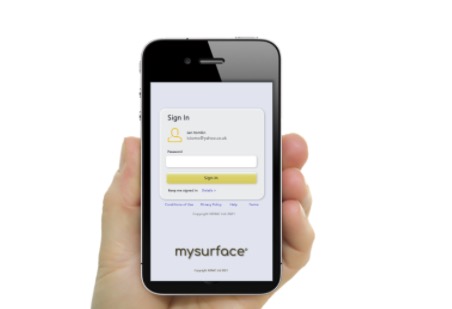
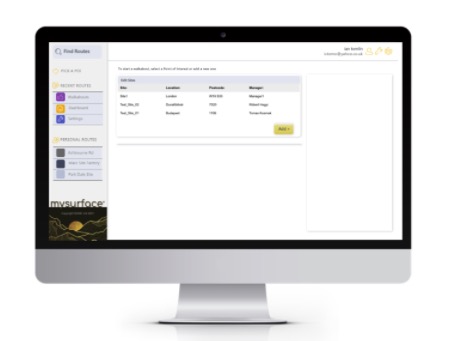
What makes no-code aPaaS different to what comes before is that at least 60% of the things you need to produce an Enterprise App come out of the box. It means the only things business Analysts need to get right are the drag and drop rules, if-then logic and workflows of the application they are building that are unique to the requirement. While No-Code applications development is fast, building apps on a No-Code Application Fabric is even faster.
People used to argue you needed a two-speed IT capability to make digital business work. That notion has thankfully gone away. No-code aPaaS returns IT influence from the outer fringes of the enterprise to the center.
That’s an awkward conversation in today’s boardrooms, but it’s arguably a necessary one.
Organizations that want to harness data, become data-driven, keep data safe, eradicate self-authored apps and spreadsheets, achieve excellence in customer experience, serve up the best applications for their stakeholders, and cut costs. History tells us that the best way to achieve it is to have a unified computing and data environment.

Data quality/integrity benefits include:
1. IT people used to coding will be resistant to change
2. Departmental heads may initially be resistant to the idea of sharing their data
3. Not every no-code aPaaS offers ALL the features you will need. So selecting the right platform with be important and isn’t always straightforward.

Ian Tomlin is a management consultant and strategist specializing in helping organizational leadership teams to grow by telling their story, designing and orchestrating their business models, and making conversation with customers and communities. He serves on the management team of Encanvas and works as a virtual CMO and board adviser for tech companies in Europe, America and Canada. He can be contacted via his LinkedIn profile or follow him on Twitter.
Now read:
At Encanvas we have a passion for low-code / no-code (we like to say codeless) software development. We’ve been leading innovation in the enterprise rapid applications development (low-code / no-code / data mashups) industry since 2002.
Our enterprise digital transformation platform is used to design, deploy and run custom apps by uniquely blending application (aPaaS), integration (iPaaS), Robotic Process Automation (RPA), and data mashup codeless software tools.
Encanvas brings agility and innovation to businesses. Used by data-driven organizations around the world, our platform evolves digitalization plans at the speed of light to maximize customer experience and minimize IT costs. Accelerate time to value of new applications as part of your digital transformation or data engineering program. Read the Encanvas Blog to learn more about what we do.

You probably already know what a high productivity application Platform as a Service (HPaPaaS) is. You just know it under a different name.
Gartner coined the term High-Productivity application Platform as a Service (HPaPaaS) to describe rapid application development platforms that provide business developers with the tools to build enterprise applications rapidly – offered as a service – with one rapid deployment and other composite capabilities. Other than for the delivery mechanism, deployment methods and operational behaviours – Low-Code and HPaPaaS have overlapping capabilities and can be interchangeably used from a neutral point of view.
HPaPaaS platforms are provisioned on a subscription model with support for multi-tenancy and resource sharing.
The applications built using HPaPaaS should be able to seamlessly deploy on multiple devices without the need of writing code for different devices or operating systems.
The platform should have the capability to manage data models, documents and business processes. As these three form the base for most enterprise applications, it is imperative to natively support them.
The platform should enable business developers to easily build enterprise applications. It should support for a model-driven, drag-n-drop environment which simplifies the app development process.
As most enterprise applications will need to integrate with internal and external systems, HPaPaaS should support all integration mechanisms including API, Microservices, EDA, etc.
HPaPaaS essentially replaces traditional methods of software development. Thus it is imperative they provide for automation tools for each phase of traditional SDLC i.e. Design, Requirements, Versioning, Testing, Integration, Deployment, etc.
HPaPaaS enables developers to build apps easily and rapidly. The platform should enable developers to collaborate and leverage prebuilt apps, development accelerators, marketplace, communities, etc.
Encanvas is an enterprise software company that specializes in helping businesses to create above and beyond customer experiences.
From Low Code to Codeless
Better than code-lite and low-code, we created the first no code (codeless) enteprise application platform to release creative minds from the torture of having to code or script applications.
Use Encanvas in your software development lifecycle to remove the barrier between IT and the business. Coding and scripting is the biggest reason why software development has been traditionally unpredictable, costly and unable to produce best-fit software results. Encanvas uniquely automates coding and scripting. Our live wireframing approach means that business analysts can create the apps you need in workshops, working across the desk with users and stakeholders.
When it comes to creating apps to create a data culture and orchestrate your business model, there’s no simpler way to instal and operate your enterprise software platform than AppFabric. Every application you create on AppFabric adds yet more data to your single-version-of-the-truth data insights. That’s because, we’ve designed AppFabric to create awesome enterprise apps that use a common data management substrate, so you can architect and implement an enterprise master data management plan.
Encanvas supplies a private-cloud Customer Data Platform that equips businesses with the means to harvest their customer and commercial data from all sources, cleanse and organize it, and provide tooling to leverage its fullest value in a secure, regulated way. We provide a retrofittable solution that bridges across existing data repositories and cleanses and organizes data to present a useful data source. Then it goes on to make data available 24×7 in a regulated way to authorized internal stakeholders and third parties to ensure adherence to data protection and FCA regulatory standards.
Encanvas Secure and Live (‘Secure&Live’) is a High-Productivity application Platform-as-a-Service. It’s an enterprise applications software platform that equips businesses with the tools they need to design, deploy applications at low cost. It achieves this by removing coding and scripting tasks and the overheads of programming applications. Unlike its rivals, Encanvas Secure&Live is completely codeless (not just Low-Code), so it removes the barriers between IT and the business. Today, you just need to know that it’s the fastest (and safest) way to design, deploy and operate enterprise applications.
Learn more by visiting www.encanvas.com.
Ian Tomlin is a management consultant and strategist specializing in helping organizational leadership teams to grow by telling their story, designing and orchestrating their business models, and making conversation with customers and communities. He serves on the management team of Encanvas and works as a virtual CMO and board adviser for tech companies in Europe, America and Canada. He can be contacted via his LinkedIn profile or follow him on Twitter.

An application platform is a computing platform used to design, deploy and operate software applications. The best-known use case for application platform technologies is found in the enterprise (so-called ‘Enterprise Application Platform’). Encanvas Secure and Live (‘Secure&Live‘) is an example of an Application Platform.
To deliver their customer values and orchestrate their business processes, organizations much adopt application software to provide an interface between workers and computer systems (human-to-machine-interfacing-applications) and between computers (machine-to-machine-interfacing-applications). Perhaps unsurprisingly, some processes require both human and machine interfaces.
Since 2007, the enterprise computing industry has been progressively leveraging cloud computing technologies to make applications more accessible and available to user communities. The use of cloud hosting applications has made it possible for applications to serve markets and users 24 hours a day, 7 days a week.
One of the challenges of porting applications to the cloud has been the risk of data loss. Data security has become an increasing concern to organizations because of their greater reliance on data to continue business operations. Additionally, the increased compliance risks of processing personally identifiable information (PII) have made organizations more concerned about the security risks of cloud-deployed applications.
Nevertheless, most application platforms today are deployed on cloud computing platforms as an applications-Platform-as-a-Service (aPaaS).
The need for greater agility in IT systems, together with the rising influence of operational departments on enterprise software buying decisions, has led to the rise in application platforms that allow non-programmers to author applications. So-called ‘Low-Code’ or ‘Codeless’ applications reduce or remove the need to see or use programming code or script in the design, deployment and operational phases of the Software Development Life-Cycle (SDLC).
Encanvas is an enterprise software company that specializes in helping businesses to create above and beyond customer experiences.
From Low Code to Codeless
Better than code-lite and low-code, we created the first codeless enterprise application platform to release creative minds from the torture of having to code or script applications.
Use Encanvas in your software development lifecycle to remove the barrier between IT and the business. Coding and scripting is the biggest reason why software development has been traditionally unpredictable, costly and unable to produce best-fit software results. Encanvas uniquely automates coding and scripting. Our live wireframing approach means that business analysts can create the apps you need in workshops, working across the desk with users and stakeholders.
When it comes to creating apps to create a data culture and orchestrate your business model, there’s no simpler way to instal and operate your enterprise software platform than AppFabric. Every application you create on AppFabric adds yet more data to your single-version-of-the-truth data insights. That’s because, we’ve designed AppFabric to create awesome enterprise apps that use a common data management substrate, so you can architect and implement an enterprise master data management plan.
Encanvas supplies a private-cloud Customer Data Platform that equips businesses with the means to harvest their customer and commercial data from all sources, cleanse and organize it, and provide tooling to leverage its fullest value in a secure, regulated way. We provide a retrofittable solution that bridges across existing data repositories and cleanses and organizes data to present a useful data source. Then it goes on to make data available 24×7 in a regulated way to authorized internal stakeholders and third parties to ensure adherence to data protection and FCA regulatory standards.
Encanvas Secure and Live (‘Secure&Live’) is a High-Productivity application Platform-as-a-Service. It’s an enterprise applications software platform that equips businesses with the tools they need to design, deploy applications at low cost. It achieves this by removing coding and scripting tasks and the overheads of programming applications. Unlike its rivals, Encanvas Secure&Live is completely codeless (not just Low-Code), so it removes the barriers between IT and the business. Today, you just need to know that it’s the fastest (and safest) way to design, deploy and operate enterprise applications.
Learn more by visiting www.encanvas.com.
Ian Tomlin is a management consultant and strategist specializing in helping organizational leadership teams to grow by telling their story, designing and orchestrating their business models, and making conversation with customers and communities. He serves on the management team of Encanvas and works as a virtual CMO and board adviser for tech companies in Europe, America and Canada. He can be contacted via his LinkedIn profile or follow him on Twitter.

Businesses around the world are looking to seize opportunities that the digital era brings. Online communities offer new potential to create wealth. But how do enterprises harness technologies like big data and the Internet of Things (IoT) to turn data into sustainable value for your business?
Digital Transformation is too big and hairy for IT to be expected to deliver it alone. The problem is, when ‘normal people’ see code on a screen they fee disenfranchised and unable to contribute to software development discussions. This is why low-code digital transformation is the way to go.
Before considering the tooling though, it’s well worth taking a step further back. Considering IT changes without first re-visiting the design and fit of business models can result in limited returns from investments in IT.
‘A business model determines how the created customer value of an enterprise is converted into value for shareholders. The mechanism that discharges this function is sometimes called the ECONOMIC ENGINE, but fundamentally its about people, process, technology and data.’
Ian Tomlin, CEO – Newton Day
Examples of mobile and web desktop applications designed and deployed on Low-Code digital transformtion platform


A low-code digital transformation agenda recognises the key role technology has to play in fashioning results. Using a low-code, or better still ‘no-code’ platform means business stakeholders and system users get to play a key role in software development decisions. It gives EVERY relevant business stakeholder a say in how to turn your business model into technology solutions, most of all the CEO.
When Chief Information Officers or newly appointed Digital Directors get handed the task of ‘making a digital transformation work’ it can prove to be a poisoned chalice. Ultimately, it’s the CEO and not IT leaders that should have the biggest say in what business models should apply to an enterprise, and how best to orchestrate them.
The end-game for CEOs is to build or buy a digital platform and ecosystem that represents the digital interface to customers, suppliers and partners. Within this same ecosystem expect to see technology building blocks to automate business processes, although a fundamental requirement of ecosystems is to make back-office processes more transparent. Companies like Amazon are demonstrating the effectiveness of built-for-purpose digital platforms to pass over data entry duties to customers, removing many of the back-room processes that traditional suppliers continue to fulfil (unsurprisingly, Amazon doesn’t use Salesforce.com to manage its CRM; its own customer ecosystem removes the need for sales teams to key-fill data).
One of the challenges CEOs face is understanding the complexities of modern technology, not just in appreciating the applicability of technology for their business models, but during the design and deployment phase when it’s so important that ‘the business’ drives ‘IT’.
This is driving demand for a new kind of agile Digital Platform development tool-set that removes the technical barriers and risks to authoring the kind of Digital Ecosystem that can fully orchestrate a business model.
%
%
%
%
%
%
Source:
1. Altimeter Group Digital Transformation Survey
2. University of Oxford
3. Gartner (2112)
4. Gartner (2112)
5. Oxford Economics and SAP (2012)
6. MIT Sloan Mgmt. Review
What form does this new kind of Digital Transformation Platform take?
There are some obvious features we’ve described here; more in terms of what such an ecosystem needs to do in order to orchestrate business models, rather than a technical list.
Platforms need a unifying codeless ‘building block’ approach to development that’s fast and affordable; so you can make mistakes and ‘fail fast’
Fully leverages your existing data assets and makes light work of cleansing data when you start to put it to work!
Modern look and feel – Nobody wants to struggle with old fashioned User Interfaces that people can only access when they’re at their desk’
You’d expect to leverage big data, artificial intelligence, IoT, data visualizations, software robots…!
It will be running business critical apps so it needs to be resilient, scalable and ultra secure – and it needs to be on the cloud!
Easy to deploy, easy to learn and use, not at risk of creating legacy issues down the line – even better if your IT team trusted it and liked using it!
One might argue that it begins with another look at the current business model. Is the incumbent business model maximizing returns to shareholders from the customer value being generated by the enterprise? Furthermore, is the customer value sufficient to keep the enterprise competitive?
One challenge is working out how to articulate the business model into outcomes, capabilities, processes and mechanisms. One of the things the team at Newton Day helps with are Sprint Workshop programs to get through this ‘recognition of needs’ phase as expediently as possible without compromising on accuracy and detail. It’s essential that enterprises really fundamentally understand who their customers are, what they value and what it takes to deliver results.
Next, a project team and plan has to be constructed.. This should comprise of a blended team of organizational design, HR, risk, legal, IT, marketing, analyst and program management experts. Whether these individuals are contracted in, or are assigned from existing resources, it’s better to measure their contribution as a team and reward it. In my opinion, the best governance model for digital platform projects is to have a regular Project Leadership Group (PLG) of senior execs reporting directly into the board and then support this with a Project Steering Group (PSG).
Once this stage is complete, the work to develop the technology ecosystem begins. This starts with stakeholder workshops and normally, having mapped out the bigger game plan, projects focus on delivering a point of detail; an aspect of the current business model that can be improved that is seen to be a quick win. Gaining early results gives everyone inside and outside the project team confidence in the value of the program.
Now, back to the original point: Can a business expect to do all of this without the CEO leading it? Or, put another way, would a CEO not want to be leading such a strategically important initiative that will be the source of the enterprises income in future years? I would argue not.

Ian Tomlin is a management consultant and strategist specializing in helping organizational leadership teams to grow by telling their story, designing and orchestrating their business models, and making conversation with customers and communities. He serves on the management team of Encanvas and works as a virtual CMO and board adviser for tech companies in Europe, America and Canada. He can be contacted via his LinkedIn profile or follow him on Twitter.
If you’re not already using a code-less design environment then maybe you should see it for yourself. Why not request a fire-side chat and experience ‘across the desk’ applications design close-up with one of our experienced consultants?